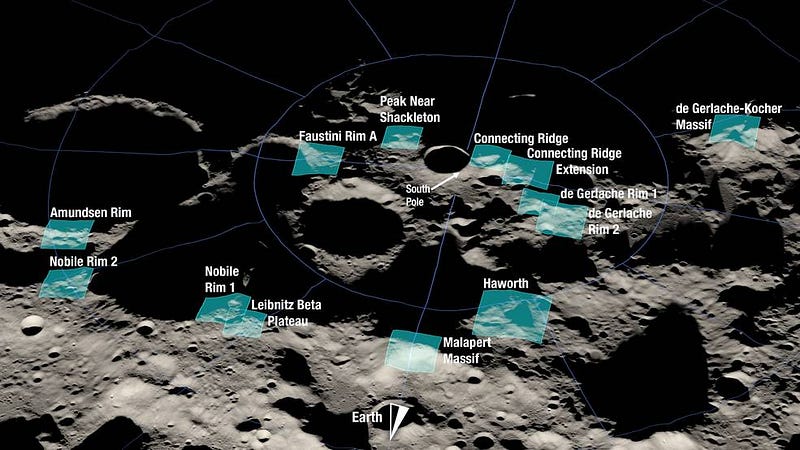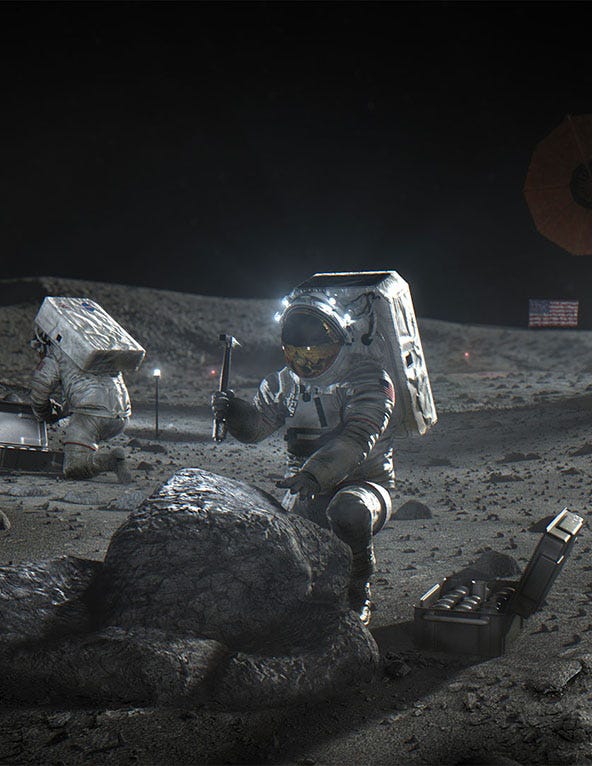The Return to the Moon: What Artemis III Aims to Achieve
Written on
Chapter 1: Introduction to Artemis III
After years of anticipation, humanity is on the verge of returning to the Moon. NASA's Artemis program is set to surpass the achievements of the Apollo missions, aiming for prolonged stays on the lunar surface and the establishment of a lunar base. Recent announcements from NASA have provided insights into the specifics of the first crewed mission, including its landing sites, objectives, and the rationale behind these choices.
Section 1.1: Selecting the Landing Sites
Determining where astronauts will land on the Moon poses significant challenges. The lunar surface is characterized by numerous craters, cliffs, and loose soil, complicating the search for a flat and stable landing zone. Moreover, varying geological features and environmental conditions across the Moon necessitate that the chosen site be in proximity to areas of interest for study.

NASA has analyzed data from the Lunar Reconnaissance Orbiter (LRO) and identified 13 potential landing sites, all located within 6 degrees of the lunar South Pole—an area that remains largely unexplored yet holds significant promise for new discoveries.
Subsection 1.1.1: Why the Lunar South Pole?
Historically, Apollo missions targeted the Moon's "maria," or seas, such as the Sea of Tranquility. These regions, composed of relatively young basalt lava flows, are smooth and largely crater-free. In contrast, the lunar South Pole is home to some of the Moon's oldest rocks and is heavily cratered, presenting a more complicated landing scenario. However, the geological samples collected here could provide critical insights into the Moon's origins and the early solar system.

Section 1.2: The Importance of Water Ice
While there are no liquid water bodies on the Moon, the presence of water ice has been confirmed. The LRO discovered craters at the South Pole that remain permanently shaded, creating potential reservoirs of water ice. NASA’s Moon Mineralogy Mapper corroborated these findings in 2018.
Artemis III will focus on investigating this water, assessing its accessibility, and determining its origins. Understanding lunar water is pivotal, not only for addressing questions about the solar system's evolution but also for supporting future lunar habitats and missions.

Chapter 2: Future Applications of Lunar Resources
Utilizing local resources, such as water, could significantly reduce the energy required for launching materials from Earth. Establishing a base capable of mining its own water supply could accelerate construction and facilitate the launching of larger spacecraft from the Moon. The Moon's lower gravity allows for easier escape velocity compared to Earth, which opens up exciting possibilities for future space missions.

Section 2.1: Energy Needs for Artemis III
To sustain operations during the mission, NASA has carefully selected landing sites that will receive solar power for approximately 6.5 days. As the Artemis program lacks lunar nuclear reactors, the reliance on solar energy is critical. Given that Artemis III plans to explore for nearly a week, ensuring a power supply during the lunar night is essential for crew safety.

Chapter 3: Preparing for Launch
There is still much preparation needed before Artemis III can commence. The SLS, NASA's specially designed lunar rocket, has yet to be launched. The program will first undergo Artemis I and Artemis II missions, which will test the rocket and the Orion spacecraft, beginning with an uncrewed mission. Only after addressing any issues that arise will they proceed with Artemis III, which is projected for 2026.
The scientific advancements and discoveries anticipated from Artemis III are groundbreaking, marking the dawn of a new era in space exploration. As we prepare for this exciting journey, the future of lunar exploration looks brighter than ever.